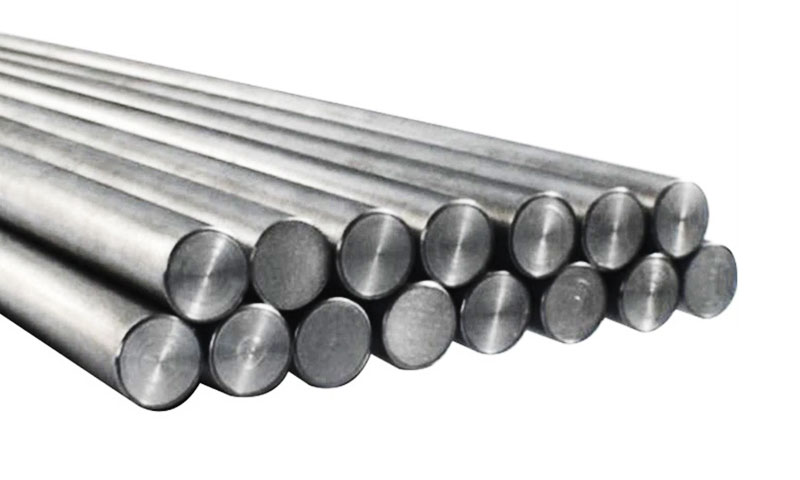1. Zavedenie
My S20910 (bežne predávané ako Nitronický 50 alebo XM-19) a UNS S21800 (bežne predávané ako Nitronický 60 alebo Zliať 218) sú pokročilé austenitické nehrdzavejúce ocele skonštruované pre náročný servis.
Obe poskytujú lepší výkon ako bežné triedy 300, ale sú optimalizované pre rôzne priority:
- S20910 (Nitronický 50) je a odolný voči korózii, dusíkom posilnený austenitický nerez optimalizovaný pre vysokú odolnosť proti korózii (vrátane kyslej obsluhy), dobrová sila, vynikajúca húževnatosť (vrátane kryogénnych), a dobrá zvárateľnosť.
Často sa uvádza, kde je odolnosť voči jamkovej korózii, SCC a húževnatosť pri nízkych teplotách sa vyžadujú spolu s primeranou pevnosťou. - S21800 (Nitronický 60) je formulovaný predovšetkým pre odolnosť proti opotrebovaniu a oderu pri zachovaní odolnosti proti korózii typickej pre austenitiku.
Obsahuje vysoký obsah kremíka a mangánu pre tribologický výkon a je vybraný tam, kde je klzný kontakt, záver, a vysoké opotrebovanie sú dominantnými spôsobmi zlyhania.
Tento článok porovnáva zloženie, mechanické a korózne správanie, výroba, a kompromisy v reálnych aplikáciách, aby ste si mohli vybrať správnu zliatinu pre konkrétny komponent alebo prostredie.
2. Čo je UNS S20910 (Nitronický 50)
My S20910, bežne známy ako Nitronický 50 alebo XM-19, je a vysokovýkonná austenitická nehrdzavejúca oceľ spevnená dusíkom.
Je navrhnutý tak, aby poskytoval kombináciu Vynikajúca odolnosť proti korózii, vysoká sila, ťažkosť, a tvrdosť, vrátane kryogénnych teplôt.
Vďaka týmto vlastnostiam je vhodný pre náročné priemyselné aplikácie, ako je chemické spracovanie, morské prostredie, a kyslé servisné podmienky.
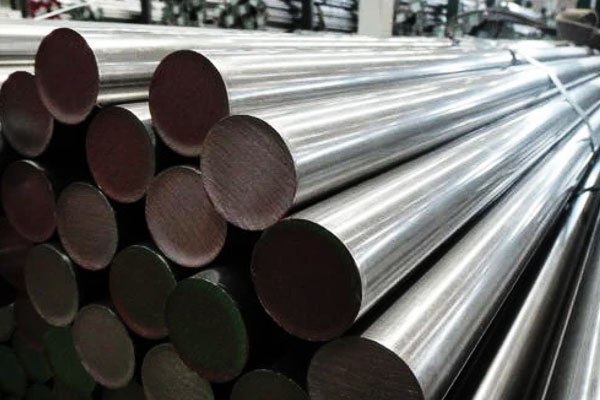
Kľúčové označenie materiálov a špecifikácie zahrnúť:
- ASTM A276 / A479 (ako XM-19)
- US S20910
- Od 1.3964
Primárne charakteristiky UNS S20910 (Nitronický 50):
- Odpor: Vylepšené zvýšeným obsahom chrómu, molybdén, a obsah dusíka; vysoko odolný proti jamkovej a štrbinovej korózii v chloridovom prostredí.
- Mechanická pevnosť: Pevnejšie ako bežné nehrdzavejúce ocele série 300, s vynikajúcou výťažnosťou a ťahovými vlastnosťami.
- Húževnatosť a húževnatosť: Udržuje výkon pri zvýšených aj kryogénnych teplotách.
- Spracovanie a zvárateľnosť: Dá sa opracovať, formovaný, a zvárané konvenčnými technikami; rozpúšťacím žíhaním sa obnovuje ťažnosť po spracovaní za studena.
- Posilnené dusíkom: Prídavok dusíka zvyšuje medzu klzu a prispieva k odolnosti proti jamkovej korózii bez ohrozenia austenitickej ťažnosti.
- Vhodnosť aplikácie: Uvedené v Nace MR0175 za kyslú obsluhu, vhodné pre námorný hardvér, chemický proces, tlakové komponenty, a konštrukčné aplikácie vyžadujúce odolnosť proti korózii a mechanické vlastnosti.
3. Čo je UNS S21800 (Nitronický 60)
My S21800, bežne označované ako Nitronický 60 alebo Zliať 218, je a vysokovýkonná austenitická nehrdzavejúca oceľ určená predovšetkým na odolnosť proti opotrebovaniu a oderu, pri zachovaní dobrého korózneho výkonu typického pre austenitiku.
Vďaka špecializovanému zloženiu je ideálny pre aplikácie, kde posuvný kontakt, priľnavé opotrebenie, a vysoké povrchové napätie sú primárne obavy.
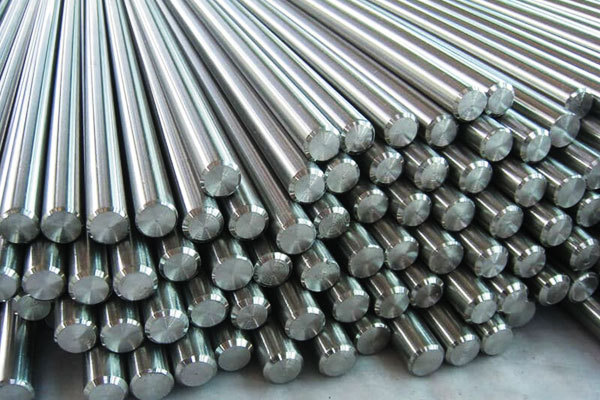
Medzi kľúčové označenia materiálov a špecifikácie patria:
- ASTM A276 / A479 (pre bary, prúty, a iné kované formy)
- US S21800
Primárne charakteristiky UNS S21800 (Nitronický 60):
- Odolnosť proti opotrebeniu a oderu: Zvýšený obsah mangánu a kremíka, kombinované s austenitickou matricou spevnenou dusíkom, poskytuje vynikajúcu odolnosť voči záver, priľnavé opotrebenie, a povrchové zachytenie.
- Odpor: Aj keď nie je tak odolný voči korózii ako Nitronic 50 vo vysoko agresívnom chloridovom prostredí, Ponúka Dobrý všeobecný odpor korózie vhodné pre mierne chemické a morské expozície.
- Mechanická pevnosť: Vykazuje vysokú pevnosť v podmienkach žíhania aj za studena, s vynikajúcou tvrdosťou povrchu po vytvrdnutí.
- Výroba a zváranie: Možno zvárať a vyrábať štandardnými metódami, aj keď jeho vyšší obsah kremíka a mangánu môže vyžadovať úpravu výberu zváracieho plniva a parametrov obrábania.
- Vhodnosť aplikácie: Bežne používané pre stonky ventilu, ochranca, čerpadlo, nosné plochy, a iné komponenty vystavené opakovanému klznému kontaktu alebo servis náročný na opotrebovanie.
4. Typické chemické zloženie a rozdiely v legovaní
Kritický faktor rozlišujúci UNS S20910 (Nitronický 50) a UNS S21800 (Nitronický 60) je ich legovacej stratégie, ktorý priamo ovplyvňuje odolnosť proti korózii, mechanická pevnosť, správanie pri nosení, a výrobné vlastnosti.
Zatiaľ čo obe sú austenitické nehrdzavejúce ocele spevnené dusíkom, sú optimalizované pre rôzne priority služieb.
Reprezentatívne chemické kompozície (7%) a Výkonová úloha
| Prvok | US S20910 (Nitronický 50) | US S21800 (Nitronický 60) | Kľúčová úloha vo výkone |
| Uhlík (C) | ≤ 0.06 | ≤ 0.10 | Ovláda silu, obmedzuje tvorbu karbidov; nízky obsah C zlepšuje odolnosť proti korózii a zvárateľnosť |
| Chróm (Cr) | 20–23 | 16–18 | Primárny prispievateľ k odolnosti proti korózii; vyššie Cr v S20910 zvyšuje PREN |
| Nikel (V) | 11–14 | 8–9 | Austenitový stabilizátor; zvyšuje húževnatosť a ťažnosť; vyšší Ni v S20910 podporuje kryogénny výkon |
| Mangán (Mn) | 5–6 | 8–9 | Zvyšuje tvrdnutie a odolnosť proti oderu; vysoký Mn v S21800 pomáha pri opotrebovaní |
| Kremík (A) | ≤ 0.5 | 3.5–4.5 | Zlepšuje odolnosť voči oxidácii a opotrebovaniu; vyšší Si v S21800 podporuje odolnosť proti zadretiu |
| Molybdén (Mí) | 1.5–3 | Nezadaný / stopa | Zvyšuje rezistenciu na koróziu jamiek a štrbín; prítomný v S20910, aby odolával chloridom |
| Dusík (N) | 0.10–0.20 | 0.08–0,18 | Posilňuje austenitickú matricu; zlepšuje odolnosť proti korózii; podporuje odolnosť proti opotrebovaniu v S21800 |
| Žehlička (FE) | Vyvážiť | Vyvážiť | Maticový prvok; vyrovnáva legovanie; poskytuje základnú austenitickú štruktúru |
Výklad: S20910 zdôrazňuje Cr + V + Mí + N (klasické austenitické korózne legovanie so spevnením dusíkom a Mo pre odolnosť proti jamkovej korózii).
S21800 vymieňa za chróm a nikel zvýšený kremík a mangán, ktoré zlepšujú tvrdosť, odolnosť proti opotrebovaniu a oderu.
4. Mechanické vlastnosti a teplotné správanie
My S20910 (Nitronický 50) a UNS S21800 (Nitronický 60) vykazujú odlišné mechanické profily odrážajúce ich stratégie legovania.
Kľúčové mechanické vlastnosti
| Majetok | US S20910 (Nitronický 50) | US S21800 (Nitronický 60) | Praktická implikácia |
| 0.2% Výnosová sila (MPA) | 350–420 | 320–380 | S20910 ponúka vyššiu základnú pevnosť pre aplikácie kritické voči korózii; S21800 získava pevnosť prostredníctvom vytvrdzovania |
| Pevnosť v ťahu (MPA) | 650–750 | 600–700 | S20910 poskytuje mierne vyššiu konečnú pevnosť; S21800 si zachováva primeranú pevnosť v ťahu so zameraním na opotrebovanie |
| Predĺženie (%) | 30–45 | 25–40 | S20910 si zachováva vynikajúcu ťažnosť; S21800 je o niečo menej tvárny, ale postačuje na tvarovanie/výrobu |
| Tvrdosť (HRB / HRC) | HRB ~85 typické žíhané | HRB ~85, môže byť vyššia pri pracovnom spevnení | Vyšší obsah Mn/Si S21800 umožňuje vynikajúcu tvrdosť povrchu po práci za studena, zvýšenie odolnosti voči zadretiu |
| Húževnatosť (J pri izbovej teplote) | Vynikajúci; zachováva húževnatosť pri kryogénnych teplotách (-196° C) | Dobre; mierne nižšia ako S20910 v kryogénnych aplikáciách | S20910 preferovaný pri nízkoteplotných alebo vysoko dynamických zaťažovacích aplikáciách |
| Výkon pri zvýšenej teplote | Dobré do ~600-700°C | Primerané; vysoký obsah Si zlepšuje odolnosť proti oxidácii pri miernych teplotách | S20910 uprednostňovaný pre vystavenie vysokoteplotnej korózii; S21800 pre vysokoteplotné komponenty vystavené opotrebovaniu |
Teplotné správanie
- Kryogénny výkon:
S20910 zachováva ~ 90 % energie nárazu pri teplotách tekutého hélia, vďaka čomu je vhodný na skladovanie LNG, kryogénne potrubie, a letecké aplikácie.
S21800 si zachováva primeranú húževnatosť, ale nie je optimalizovaný pre extrémne nízke teploty. - Výkon zvýšenej teploty:
Obe zliatiny si zachovávajú rozmerovú stabilitu a pevnosť pri mierne zvýšených teplotách.
Obsah Mo Nitronic 50 poskytuje dodatočnú odolnosť voči vysokoteplotnej korózii, zatiaľ čo vysoký obsah Si Nitronic 60 zlepšuje odolnosť proti oxidácii v aplikáciách s klzným kontaktom. - Tvrdenie práce:
Obe zliatiny sú austenitické a pracovné kalenie, čo znamená mechanické vlastnosti, najmä tvrdosť a medza klzu, možno zvýšiť pomocou spracovania za studena.
S21800 má najväčší úžitok vďaka vysokému obsahu Mn a Si, zlepšenie výkonu pri opotrebovaní a odieraní.
5. Odolnosť proti korózii a odolnosť proti jamkovej korózii (Drevo)
Číslo ekvivalentného odporu. (Drevo) je užitočným indikátorom odolnosti voči chloridovým jamkám; počíta sa z Cr, Obsah Mo a N (zjednodušená forma: ZOBRAŤ ≈ Cr + 3.3× MO + 16× n).
- Nitronický 50 (S20910) — vyššie Cr, Výťažok Mo a N hodnoty PREN v nízkych až stredných 30. rokoch (typický technický údaj ≈ ~34).
To ho stavia vysoko nad 316 l (Drevo ≈ 20–25) a je vhodný do mnohých prostredí s obsahom chloridov, vrátane niektorých námorných a kyslých služieb (je bežne akceptovaný pre kvalifikáciu NACE MR0175 v mnohých podmienkach – overte certifikát). - Nitronický 60 (S21800) — pretože Mo zvyčajne chýba a Cr je nižší, PREN je znížiť (typické v polovici 20. rokov alebo menej v závislosti od presnej chémie).
Zatiaľ čo S21800 pomerne dobre odoláva všeobecnej korózii, je to nie vybrané predovšetkým pre odolnosť proti jamkovej korózii; namiesto toho, používa sa kde odieranie a opotrebovanie sú primárne obavy.
6. Obliecť sa, odrenlivý a tribologický výkon
- Nitronický 60 (S21800) je navrhnutý pre odolnosť proti zadretiu a klznému opotrebovaniu.
Vysoký obsah kremíka a mangánu, v kombinácii s pracovnou schopnosťou kalenia, vytvárajú povrch, ktorý odoláva adhéznemu opotrebovaniu a zadieraniu kov na kov.
Typické použitie zahŕňa drieky ventilov, sedadlá, ochranca, a komponenty čerpadla, kde dochádza k opakovanému klznému kontaktu. - Nitronický 50 (S20910) ponuka dobrý odpor, ale jeho primárnou silnou stránkou je skôr odolnosť proti korózii a húževnatosť než optimalizovaná odolnosť proti oderu.
Niekedy sa používa v aplikáciách opotrebovania, kde sa vyžaduje aj kontrola korózie, ale v prostredí s extrémnym zaťažením ho S21800 zvyčajne prekonáva.
7. Výroba, úvahy o zváraní a tepelnom spracovaní
Zvárateľnosť
- Obe zliatiny sú zvárateľný štandardnými procesmi (Tigový, Ja, Smaw).
- S20910 (vyššie N/N) je vysoko zvárateľný a zachováva si odolnosť proti korózii po zváraní pri použití správnych postupov a prídavných kovov.
Nízkouhlíkové a stabilizované postupy môžu minimalizovať riziko senzibilizácie. - S21800 vyžaduje pozornosť tepelnému príkonu a výberu plniva, pretože jeho vysoký Si a Mn môže ovplyvniť zloženie zvarového kovu; Postupy tepelného spracovania predhrievaním/po zváraní závisia od veľkosti komponentov a požiadaviek kódu.
Tvarovanie a obrábanie
- Obaja sú pracovný austenitika; Vyšší obsah Si/Mn S21800 môže spôsobiť, že rezanie bude náročnejšie – nástroje a rýchlosti si vyžadujú úpravu.
S20910 v stave žíhanom v roztoku sa vo všeobecnosti ľahšie obrába/tvaruje.
Tepelné spracovanie
- Toto sú austentické zliatiny—pevnosť pochádza predovšetkým z tvárnenia za studena a legovania; úplné vytvrdenie kalením/popúšťaním nie je použiteľné.
Roztokové žíhanie môže obnoviť ťažnosť a odolnosť proti korózii (typické žíhanie ~1000–1100 °C, po ktorom nasleduje rýchle ochladenie).
Vodíková/kyslá služba
- Chémia S20910 a zoznam v niektorých pokynoch pre kyslé služby ho robia vhodným pre prostredia H₂S (overiť certifikácie NACE/ISO).
Pre kyslé zvarové postupy a limity tvrdosti (HRC prahy) sa bežne presadzujú.
8. Aplikácie austenitickej nehrdzavejúcej ocele UNS S20910 vs UNS S21800
Rôzne stratégie legovania, mechanické vlastnosti, a charakteristiky korózie/opotrebenia US S20910 (Nitronický 50) a US S21800 (Nitronický 60) definovať ich vhodnosť pre rôzne priemyselné aplikácie.
Aplikácie UNS S20910 (Nitronický 50)
UNS S20910 je navrhnutý pre vysoká odolnosť proti korózii, vynikajúca húževnatosť, a dobrá zvárateľnosť, vďaka čomu je ideálny pre prostredia, kde sú oboje korózia a mechanické vlastnosti sú kritické.
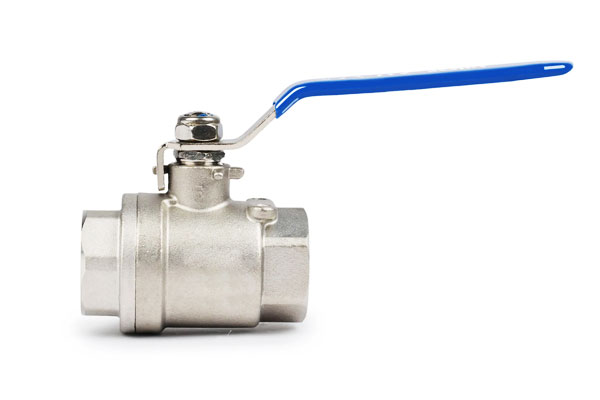
| Priemysel / Odvetvie | Typické aplikácie | Kľúčová požiadavka na výkon |
| Morský & Pobrežie | Armatúry pre morskú vodu, čerpadlo, ochranca, ventily | Vysoká odolnosť chloridu, prevencia jamkovej/štrbinovej korózie |
| Chemický & Vybavenie | Výmenník tepla, reaktory, potrubie, tanky | Odolnosť voči kyselinám, chloridy, a kyslá obsluha (Expozícia) |
| Kryogénne aplikácie | Skladovacie a prepravné potrubie LNG, kryogénne ventily | Zachováva húževnatosť pri extrémne nízkych teplotách (-196° C) |
| Letectvo a kozmonautika | Palivové vedenia, kryogénne zložky | Vysoká sila, odpor, nízkoteplotná ťažnosť |
| Energia & Moc | Komponenty kotla, časti turbíny v korozívnom prostredí | Kombinácia odolnosti proti korózii a mechanickej integrity |
Aplikácie UNS S21800 (Nitronický 60)
UNS S21800 je optimalizovaný pre odolnosť proti oderu a opotrebovaniu pri zachovaní primeraného korózneho výkonu.
Je ideálny pre mechanické komponenty vystavené kĺzaniu, adhézny kontakt, alebo vysoké povrchové napätie.
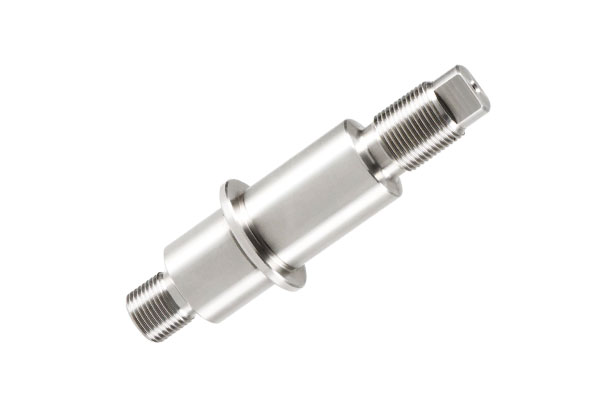
| Priemysel / Odvetvie | Typické aplikácie | Kľúčová požiadavka na výkon |
| Ventil & Priemysel čerpadiel | Stonky ventilu, sedadlá, čerpadlo, ochranca | Vysoká odolnosť proti oderu, posuvné opotrebenie, adhézny záchvat |
| Priemyselné stroje | Ložiská, puzdro, protiľahlé povrchy s vysokým opotrebovaním | Tvrdosť, schopnosť vytvrdzovania, nízky trenie |
| Automobilový priemysel & Ťažký | Ochranca, komponenty s vysokým opotrebením, poháriky | Prevencia odierania, trvanlivosť pri opakovanom posúvaní alebo kontakte |
| Námorné aplikácie | Palubný hardvér, mechanické spoje | Stredná odolnosť proti korózii s vysokou ochranou proti opotrebovaniu/zadretiu |
| Chemické spracovanie | Miešacie hriadele, lopatky miešadla | Komponenty odolné voči opotrebovaniu, kde dochádza k miernej korózii |
Návod na použitie
- Vyberte UNS S20910 keď je prvoradý záujem odolnosť proti korózii v agresívnom alebo kyslom prostredí, najmä pri húževnatosti, zvárateľnosť, a vyžaduje sa výkon pri nízkych teplotách.
- Vyberte UNS S21800 kedy záver, obliecť sa, a posuvný kontakt dominujú režimy zlyhania, aj keď je odolnosť proti korózii menej kritická.
- V zložitých zostavách, hybridné dizajny môže využiť obe zliatiny – použitie S20910 pre diely kritické pre koróziu a S21800 pre spojovacie povrchy s vysokým opotrebovaním.
Povrchové inžinierstvo ako napr povlaky, nitriding, alebo PVD ošetrenia v kombinácii s týmito zliatinami môže ďalej predĺžiť životnosť.
9. Priama porovnávacia tabuľka: UNS S20910 verzus UNS S21800
| Funkcia / Majetok | US S20910 (Nitronický 50) | US S21800 (Nitronický 60) | Praktická implikácia |
| Primárne zameranie | Odpor, tvrdosť | Odolnosť proti opotrebeniu/zadieraniu, tvrdosť | Výber vodidiel na základe prostredia a mechanického namáhania |
| Výnosová sila (MPA) | 350–420 | 320–380 | S20910 má vyššiu základnú pevnosť; S21800 môže dosiahnuť vyššiu tvrdosť povrchu tvárou za studena |
| Pevnosť v ťahu (MPA) | 650–750 | 600–700 | S20910 o niečo vyššie; S21800 optimalizovaný skôr na odolnosť proti opotrebovaniu než na maximálnu pevnosť |
| Predĺženie (%) | 30–45 | 25–40 | S20910 tvárnejšia; S21800 o niečo menej, ale primerané na výrobu |
| Tvrdosť (HRB / HRC) | HRB ~85 typické žíhané | HRB ~85, sa môže zvýšiť pracovným otužovaním | S21800 lepšie pre aplikácie s odieraním a opotrebovaním povrchu |
| Húževnatosť | Vynikajúci; zachováva kryogénny výkon | Dobre; nižšie pri kryogénnych teplotách | S20910 preferovaný v prostredí s nízkou teplotou alebo dynamickou záťažou |
| Odpor | Veľmi vysoký | Mierny | Usmerňuje výber zliatiny v chemikáliách, námorný, alebo aplikácie kyslých služieb |
| Obliecť sa / Odolnosť voči opotrebeniu | Mierny | Veľmi vysoký | S21800 je preferovaná možnosť pre pohyblivé časti, stonky ventilu, a upevňovacie prvky |
| Výroba & Zváranie | Vynikajúci; roztokovo žíhané alebo vytvrdzované | Dobre; vyžaduje zohľadnenie parametrov zvárania plniva a obrábania | S20910 sa ľahšie vyrába v zložitých geometriách; S21800 môže vyžadovať úpravy nástrojov |
| Maximálna prevádzka | ~900 °C | ~750 °C | S20910 vhodný pre vystavenie vyššej teplote korózii; S21800 pre mierne teploty vystavené opotrebovaniu |
| Drevo (Číslo ekvivalentného odporu.) | ~34 | ~23.4 | S20910 poskytuje vynikajúcu odolnosť proti jamkovej a štrbinovej korózii, najmä v |
10. Záver
My S20910 vs S21800 sú komplementárne zliatiny v rámci rodiny Nitronic.
Vyberte si S20910 kde odolnosť proti korózii (najmä kôstkovaná/štrbinová a kyslá obsluha) plus húževnatosť a zvárateľnosť sú prvoradé.
Vyberte si S21800 kde dominuje odieranie a opotrebovanie a korózia je sekundárnym problémom.
V mnohých reálnych aplikáciách je optimálnym riešením kombinácia – navrhnite systém tak, aby každý diel videl zliatinu, ktorá najlepšie vyhovuje jej dominantnému poruchovému režimu, alebo použite povrchovú úpravu na predĺženie životnosti.
Časté otázky
Sú magnetické UNS S20910 a S21800?
Nie – obe sú plne austenitické (alebo takmer úplne austenitické) v žíhanom stave, s magnetickou permeabilitou <1.005 (ASTM A342). Opracovanie za studena môže vyvolať slabý magnetizmus, ale to je reverzibilné žíhaním.
Môžem zvárať S21800 so štandardnými nerezovými plnivami?
Áno, ale vyberte plnivá a postupy tak, aby vyhovovali vysokej chémii Si/Mn S21800 – prečítajte si špecifikácie postupu zvárania a pokyny dodávateľa plniva.
Ktorá zliatina odoláva praskaniu sulfidovým napätím (SSC)?
S20910 je bežne akceptovaný pre mnohé prostredia SSC a používa sa v aplikáciách NACE; overiť špecifické certifikácie NACE/ISO a limity tvrdosti.
Je Nitronic 60 (S21800) vhodné pre morskú vodu?
Má primeranú všeobecnú odolnosť proti korózii v morskej vode, ale chýba mu odolnosť proti jamkovej korózii Nitronic 50 alebo Mo-ložiskové triedy; ak je kritická tvorba jamiek morskej vody, zvoľte S20910 alebo vyššiu zliatinu PREN.
Každá zliatina môže byť tepelne spracovaná na zvýšenie pevnosti?
Tieto austenitické zliatiny získavajú pevnosť najmä tým chladná práca a zliatinový; konvenčné kalenie/temperovanie sa nepoužívajú na výrazné zvýšenie pevnosti. Roztokové žíhanie obnovuje ťažnosť/odolnosť voči korózii.
